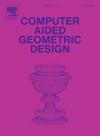The aesthetic appeal and removability of clear aligners have led to their widespread popularity in orthodontic treatments. Dental attachments significantly contribute to shortening treatment duration and enhancing orthodontic outcomes. The automation of tailor-made dental attachments for individual teeth plays a crucial role in the field of orthodontics. This is because they enable more precise control over the forces applied, thereby effectively facilitating tooth movement. This study introduces an automated algorithm that generates dental attachments based on the orthodontic path. The algorithm automatically selects and places the appropriate type of attachment according to the magnitude of rotation and translation of teeth during orthodontic procedures. It adjusts the position and posture of the attachments to fit the teeth accurately. To validate the effectiveness of automatically placed attachments in guiding teeth along the predetermined path, this study employs finite element analysis to simulate the impact of attachments on teeth. Comparative analyses between the automated method and traditional manual techniques show that the proposed algorithm significantly enhances the precision and efficiency of attachment placement. Additionally, finite element simulations confirm the feasibility and effectiveness of this approach in clinical orthodontic applications, providing a novel technical pathway for automating attachment placement in orthodontic treatments and offering significant practical value for personalized and efficient orthodontic care.


